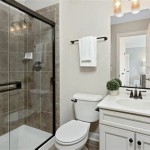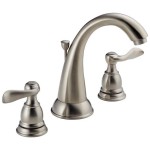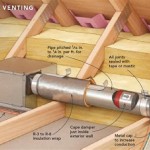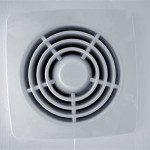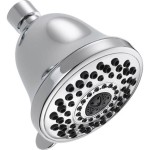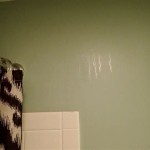Why Do I Keep Getting Gnats In My Bathroom?
Gnats in the bathroom are a common nuisance that can plague homeowners. While seemingly harmless, their persistent presence can be frustrating and indicative of underlying issues. Understanding the root causes of these infestations is crucial for effective management and prevention. Gnats, a broad term often used to describe various small flying insects, thrive in moist environments with readily available sources of organic matter. The bathroom, with its inherent humidity and potential for decaying organic material, often provides an ideal breeding ground for these unwelcome guests.
To effectively address a gnat problem in the bathroom, a multi-faceted approach is necessary. This involves identifying the specific type of gnat, locating the source of the infestation, and implementing appropriate control measures. Preventative steps are also critical in minimizing the likelihood of future outbreaks. Ignoring a gnat infestation can lead to an increase in their numbers and potential spread to other areas of the home.
Identifying the Culprit: Types of Gnats Commonly Found in Bathrooms
The term "gnat" is a somewhat imprecise term that encompasses several species of small flying insects. Accurately identifying the specific type of gnat infesting the bathroom is essential for selecting the most effective control methods. The most common culprits include drain flies (also known as moth flies), fruit flies, and fungus gnats.
Drain flies are small, dark-colored insects with fuzzy bodies and wings that appear oversized. Their wings are held in a roof-like manner when at rest, giving them a moth-like appearance. As their name suggests, drain flies are typically found near drains, where they breed in the stagnant water and organic sludge that accumulates within the pipes. They are attracted to the decaying matter and moisture present in these environments.
Fruit flies are small, brown or tan insects with red eyes. They are attracted to overripe fruits, vegetables, and other fermenting substances. While not exclusively bathroom pests, fruit flies can be drawn to the bathroom if there are accessible sources of food, such as spilled drinks, discarded fruit peels in nearby trash cans, or even residue from sugary cleaning products. They can also breed in damp mops or sponges left in the bathroom.
Fungus gnats are small, dark, long-legged insects that resemble mosquitoes in appearance. They are primarily associated with houseplants and thrive in moist soil rich in decaying organic matter. While less common in bathrooms than drain flies or fruit flies, fungus gnats can be attracted to the area if houseplants are present or if moisture accumulates in dark, undisturbed areas, such as under sinks or behind toilets. They are drawn to the humidity and potential for fungal growth.
Pinpointing the Source: Where Are the Gnats Breeding?
Once the type of gnat has been identified, the next step is to locate the source of the infestation. This involves a thorough inspection of the bathroom and surrounding areas to identify potential breeding grounds. The most common sources of gnat infestations in bathrooms are drains, leaky pipes, and damp organic matter.
Drains are a prime breeding ground for drain flies due to the accumulation of organic sludge and stagnant water within the pipes. Hair, soap scum, food particles, and other debris can collect in drains, providing a rich source of food for drain fly larvae. The moist environment further promotes their development. Inspect all drains in the bathroom, including sink drains, shower drains, and bathtub drains. Look for signs of gnat activity, such as adult flies hovering near the drain or larvae crawling within the drain.
Leaky pipes, whether under the sink, behind the toilet, or within the walls, can provide a constant source of moisture that attracts gnats. The moisture can also promote the growth of mold and mildew, which can serve as a food source for certain types of gnats. Inspect all pipes and fittings for signs of leaks or condensation. Pay particular attention to areas where pipes connect to fixtures or where there are visible signs of water damage.
Damp organic matter, such as wet mops, sponges, or piles of damp towels, can also serve as breeding grounds for gnats. These materials provide a moist environment and a source of decaying organic matter that attracts the insects. Ensure that mops and sponges are thoroughly dried after each use. Avoid leaving damp towels on the floor or hanging in the bathroom for extended periods. Regularly clean and disinfect these items to prevent the accumulation of organic matter.
Other less obvious sources of gnat infestations can include overflowing drip trays under potted plants, stagnant water in decorative vases, and even damp areas behind wallpaper or tiles. A comprehensive inspection of the bathroom and surrounding areas is crucial to identify all potential breeding grounds.
Implementing Control Measures: Getting Rid of Gnats in the Bathroom
Once the source of the gnat infestation has been identified, appropriate control measures can be implemented. These measures typically involve eliminating the breeding ground, killing adult gnats, and preventing future infestations. A combination of methods is often necessary for effective long-term control.
Eliminating the breeding ground is the most crucial step in controlling gnat infestations. For drain flies, this involves thoroughly cleaning the drains to remove the organic sludge and stagnant water. This can be accomplished by using a drain snake, a stiff brush, or a commercially available drain cleaner specifically designed to break down organic matter. Avoid using harsh chemicals that can damage the pipes. Regular cleaning of the drains will help prevent future build-up of organic matter.
For fruit flies, eliminating sources of fermenting substances is essential. This involves promptly cleaning up spills, discarding overripe fruits and vegetables, and keeping trash cans tightly sealed. Ensure that surfaces are wiped clean to remove any sugary residues. Inspect nearby areas, such as the kitchen, for potential sources of fruit flies.
For fungus gnats, reducing the moisture content of the soil in houseplants is crucial. Allow the soil to dry out between waterings and avoid overwatering. Consider repotting plants with fresh, well-draining soil. You can also use yellow sticky traps to capture adult fungus gnats flying around the plants.
Killing adult gnats can provide immediate relief from the infestation. Several methods can be used to kill adult gnats, including fly swatters, sticky traps, and aerosol insecticides. Fly swatters are a simple and effective way to kill individual gnats. Sticky traps can be placed near potential breeding grounds to capture adult gnats. Aerosol insecticides can be used to spray areas where gnats are present, but it is important to use them sparingly and follow the manufacturer's instructions carefully. Consider using natural or organic insecticides to minimize the risk of exposure to harmful chemicals.
Preventing future infestations is essential for long-term control of gnats in the bathroom. This involves maintaining a clean and dry environment, regularly cleaning drains, and promptly repairing any leaks. Ensure that mops and sponges are thoroughly dried after each use and avoid leaving damp towels on the floor. Inspect pipes and fixtures regularly for leaks and address any problems promptly. Keep trash cans tightly sealed and empty them regularly. By implementing these preventative measures, you can significantly reduce the likelihood of future gnat infestations.
Other preventative measures include improving ventilation in the bathroom to reduce humidity, using screens on windows and doors to prevent gnats from entering the home, and avoiding the use of sugary or scented cleaning products that can attract gnats. By taking a proactive approach to gnat control, you can keep your bathroom free from these unwanted pests.
In addition to the above methods, some homeowners find success using a vinegar trap. Simply fill a small bowl with apple cider vinegar, add a drop of dish soap (which breaks the surface tension of the vinegar), and cover the bowl with plastic wrap. Poke small holes in the plastic wrap. The gnats will be attracted to the vinegar, enter the trap, and drown. This method is particularly effective for fruit flies but may also attract other types of gnats.
It is also important to consider the overall cleanliness of the home, as gnats may be attracted to other areas besides the bathroom. Keep kitchen counters clean and free of food debris, regularly empty trash cans, and store food in airtight containers. By maintaining a clean and sanitary environment throughout the home, you can minimize the overall attraction of gnats.
In some cases, a professional pest control service may be necessary to effectively control a gnat infestation. This is particularly true for severe infestations or when the source of the infestation is difficult to locate. A pest control professional can identify the specific type of gnat, locate the breeding ground, and implement appropriate control measures to eliminate the infestation.
How To Get Rid Of Gnats Drain Flies Fruit And Fungus
Jab Plumbing Solutions Blog Blocked Drain Plumbers

Fruit Flies In The Bathroom Get Rid Of Them Michael S Plumbing Orlando

5 Easy Ways To Get Rid Of Drain Flies Fast

How To Get Rid Of Drain Flies Moth And Prevent An Infestation Pest Defence

How To Rid Of Drain Flies Forbes Home
How To Get Rid Of Gnats In A Bathroom Quora

Are These Drain Flies Coming Out Of My Bathroom Drains

How To Get Rid Of Gnats The Home Depot

How To Get Rid Of Drain Flies Rt Olson Plumbing
Related Posts
